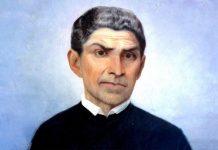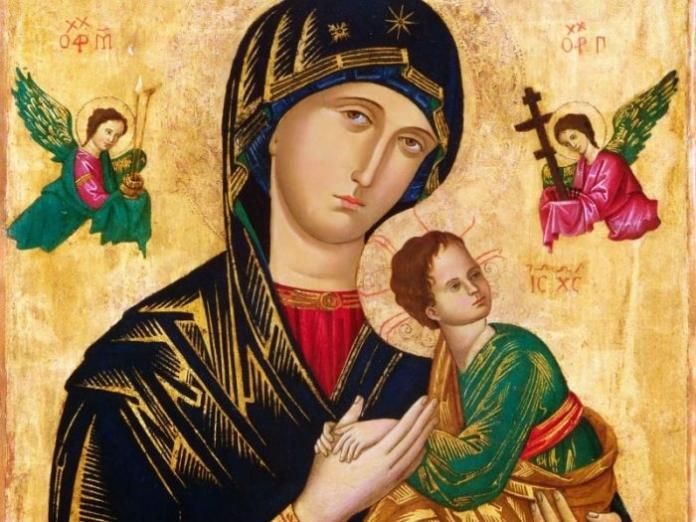Having been raised body and soul to heavenly glory, Mary Most Holy begets with her Divine Spouse, the Holy Spirit, beloved children. These, in turn, while in this vale of tears, will have the same fate as their Mother, that is, they will be persecuted and will fight innumerable battles against the power of darkness, but, in the end, they will triumph together with her in the highest heaven.
Newsroom (August 16, 2021 3:06 PM Gaudium Press) Yesterday, the Holy Church celebrated the Assumption of Our Lady, an episode that, although commemorated by the faithful since ancient times, was only defined as a dogma of faith in the last century. In 1954, Pius XII said: “We declare and declare it to be a divinely revealed dogma that the immaculate Mother of God, the ever-virgin Mary, having completed the course of her earthly life, was assumed in body and soul into heavenly glory.”
Persecution, combat, and triumph!
The liturgy for this Solemnity suggests three elements for reflection: persecution, combat, and triumph.
In the first reading, taken from the mysterious and prophetic Book of Revelation – which is and will be applicable to Salvation history until the end of time – St. John mentions that “a great sign appeared in heaven, a woman clothed with the sun. […] And she bore a male child, who came to rule all nations with a rod of iron” (Rev 12:1-5).
Many Scripture scholars agree that this Woman symbolizes not only Our Lady but also the Church. However, without any doubt, the “Man Child” to whom she gave birth refers to the Person of Our Lord Jesus Christ, who, besides being the founder of the Holy Church, its Mystical Body, is above all its head.
And, as Mary Most Holy is the Mother of the Church, it is she who, according to what the great Marian saint, Saint Louis Marie Grignion de Montfort, teaches us in his “Treatise on True Devotion to the Blessed Virgin” (cf. n. 32-34): united to the Divine Holy Spirit, she generates all the elect who are to constitute the Mystical Body of Christ.
Now, we observe in the first reading that the dragon stood before the woman “ready to devour her child as soon as it was born,” as well as to persecute her, “and she fled into the wilderness where God had prepared a place for her” (Cf. Rev 12:1-10). Already in the protoevangelical Gospel, the sacred author alludes to the fierce struggle that the sons of the Blessed Virgin would have to wage throughout history with the race of Satan: “I will put enmity between you and the serpent, between your seed and his seed. He shall bruise your head, and you shall bruise his heel” (Gen 3:15). This is logical, for if they persecuted the Mother, their children will suffer the same fate.
The most valuable fruits
However, among the children engendered from this fertile espousal of Mary with the Holy Spirit, there are some that are particularly valuable. These are the men and women raised up by God to remedy the evils of every historical period. These men and women have for mission to reflect and show to the humanity of their time the true physiognomy of Our Lord Jesus Christ, taking Him and making Him present to all peoples. It is the example given to us by Mary, when she brought the Author of Salvation to her cousin Saint Elizabeth (cf. Lk 1:39-56).
Among these precious fruits, it is worth mentioning those that gave birth to the different families of soul that exist in the Church. They, each in his own way, were called not only to represent one of the facets of the Mystical Spouse of Our Lord Jesus Christ but also to be those who should sustain her, defending her from all the attacks of the power of darkness, in order to preserve her holy and immaculate. Such were Saint Benedict, Saint Francis of Assisi, Saint Teresa of Jesus, Saint Ignatius of Loyola, Saint Philip Neri and many others.
Throughout the centuries, these founders, chosen sons of the Blessed Virgin, have been the special object of hatred of the infernal dragon, who, through his followers, wants to “devour” them as soon as they are given birth (cf. Rev 12:4). History itself attests that, at the root of all the great persecutions suffered by the Church, is this irreducible and satanic hatred of these providential men, whose charisms, lives and examples, denounce and combat the evils of their times.
We find numerous examples that illustrate this throughout history. One of them is the work of St. Ignatius of Loyola, the Society of Jesus, which, shortly after its foundation, was persecuted and slandered in every way, even, sometime later, being closed down.
But, paraphrasing Gamaliel’s words to the Sanhedrin about the Apostles: “do not be mixed up with these men. Leave them! If their project or their work comes from men, it will destroy itself” (Acts 5:38), we can affirm that if the work comes from God, if its charisma is truly inspired by the Holy Spirit, He Himself will take care of it and sustain it!
That is exactly what happened with the work of St. Ignatius. After the company was closed, the Jesuits who remained faithful to the founder had the joy of, in a few years, seeing their order once again militating in favour of the Church.
The triumph of the Holy Church
In our days, in this combat between good and evil, once again God will show the strength of his arm, dispersing and knocking down the proud from their throne, and raising up the humble (cf. Lk 1:51-52), sons and devotees of the Blessed Virgin.
In the present historical phase, stage of an unprecedented religious crisis, the consideration of the Assumption of Mary calls us to have unbreakable confidence in the triumph of the Holy Church, even when she is taking refuge in the desert (cf. Rev 12:6) or sleeping the sleep of apparent death.
For, like Our Lady, after her “Dormition,” the Church will rise again and be exalted above the angelic choirs, all her enemies being put under her feet, as St. Paul says in the second reading, “It will be the end when he hands over the kingship to God the Father, after destroying all principality, power, and might. For he must reign until all his enemies are put under his feet (Cf. 1 Cor 15:25-27).
By Guilherme Maia
[1] PIUS XII. Apostolic constitution Munificentissimus Deus, November 1, 1954. (DH 3903). In: DENZINGER, Heinrich; HÜNERMANN, Peter (ed.). Compendium of the symbols, definitions and declarations of faith and morals. Trad. José Marino Luz; Johan Konings. São Paulo: Paulinas; Loyola.
Compiled by Zephania Gangl































